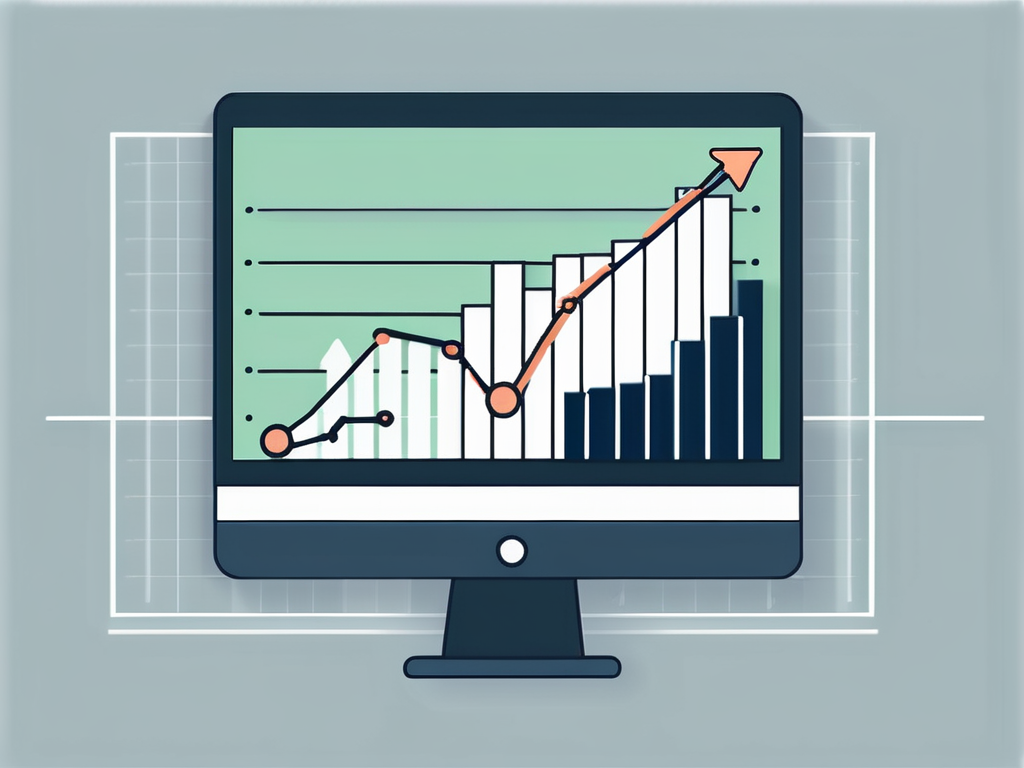Understanding the Pricing Structure of Shopify Plus
Shopify Plus is a robust e-commerce platform tailored for enterprise businesses that have unique requirements and high-volume sales. However, it's crucial to understand the pricing structure to determine if it aligns with your budget and business goals.
Unlike the regular Shopify plans, Shopify Plus operates on a quote-based pricing model. This means that the cost will vary depending on factors such as your business size, monthly sales volume, customization needs, and additional features you require.
By reaching out to the Shopify Plus sales team, you can receive a personalized quote that takes into consideration your specific needs and goals. Moreover, they can offer guidance on cost optimization strategies and help you gain maximum value from the platform.
It's important to note that while the initial cost of Shopify Plus may seem higher than other e-commerce solutions, the platform offers a wide range of benefits that can result in significant cost savings in the long run. These benefits include dedicated account management, priority support, access to exclusive features, and scalability to support your business growth without the need to switch platforms.
Furthermore, Shopify Plus provides advanced security features to protect your store and customer data, compliance with industry standards, and seamless integrations with third-party applications to enhance the functionality of your online store. This comprehensive approach ensures that your e-commerce operations run smoothly and securely, giving you peace of mind and allowing you to focus on growing your business.
Factors Influencing the Cost of Shopify Plus
Whether you're a growing business or an established brand, it's important to consider the factors that can influence the cost of Shopify Plus. By understanding these factors, you can make informed decisions about your investment.
One significant factor is the monthly sales volume. Shopify Plus pricing is typically tied to the number of transactions you process each month. As your business scales and your sales volume increases, the cost of Shopify Plus will also rise accordingly.
Furthermore, customizations and integrations play a role in the pricing structure. Shopify Plus allows businesses to tailor their online stores to their specific needs, but it's important to consider any additional development costs and ongoing maintenance expenses.
When it comes to customizations, Shopify Plus offers a wide range of options to enhance the user experience and functionality of your online store. From custom themes and apps to personalized checkout processes, businesses can create a unique and tailored shopping experience for their customers. However, it's essential to budget not only for the initial setup of these customizations but also for any future updates or changes that may be required.
Lastly, Shopify Plus offers various enterprise-level features, such as advanced analytics, multi-channel integrations, and priority access to customer support. These features can add to the cost, but they also provide valuable tools and resources to enhance your business operations.
Advanced analytics tools offered by Shopify Plus can provide businesses with valuable insights into customer behavior, sales trends, and marketing performance. By leveraging these analytics, businesses can make data-driven decisions to optimize their online presence and drive growth. Additionally, multi-channel integrations enable businesses to reach customers across various platforms, from social media to online marketplaces, expanding their reach and potential for sales.
Comparing Shopify Plus Pricing to Other E-commerce Platforms
When considering the cost of Shopify Plus, it's essential to weigh it against the pricing of other e-commerce platforms. This comparison will help you understand the value and competitiveness of the Shopify Plus pricing structure.

While there are alternative platforms available, Shopify Plus stands out for its scalability, flexibility, and robust features. Furthermore, many businesses find that Shopify Plus provides a cost-effective solution for their growing needs.
However, it's advisable to conduct a thorough analysis of other platforms to ensure you're selecting the best fit for your business requirements and budget. Some alternative platforms may offer lower upfront costs but might lack the scalability and advanced features that Shopify Plus provides.
One key factor to consider when evaluating e-commerce platforms is the level of customer support and resources offered. Shopify Plus is known for its dedicated support team that is available 24/7 to assist with any issues or questions that may arise. This level of support can be invaluable for businesses, especially during peak sales periods or when implementing new features.
Additionally, Shopify Plus offers a wide range of integrations with third-party apps and services, allowing businesses to customize their online stores to meet specific needs. This flexibility can be a significant advantage for businesses looking to create a unique and tailored e-commerce experience for their customers.
Tips for Managing and Optimizing Your Shopify Plus Expenses
As a business owner utilizing Shopify Plus, it's important to effectively manage and optimize your expenses on the platform. By implementing certain strategies, you can make the most of your investment and maximize your return on investment.
Firstly, regularly evaluate your business needs. As your business evolves, your requirements may change. Assessing your current needs will help you identify any unnecessary expenses and ensure that you have the right plan in place.
Secondly, leverage the built-in analytics provided by Shopify Plus. By monitoring key metrics such as customer acquisition costs, average order value, and lifetime customer value, you can identify areas for improvement and make data-driven decisions to optimize your expenses.
Additionally, consider implementing automation and third-party apps to streamline processes and minimize manual efforts. Automation can help reduce costs related to staffing and eliminate potential human errors or bottlenecks.
Real-Life Case Studies: How Businesses Have Leveraged Shopify Plus Cost-Effectively
To gain a deeper understanding of how businesses have successfully managed their expenses on Shopify Plus, let's explore a few real-life case studies.

Case Study 1: Company XYZ, a rapidly growing fashion brand, utilized the scalability of Shopify Plus to handle increasing sales volumes. By optimizing their store performance and leveraging advanced analytics, they could make data-driven decisions, resulting in a 20% increase in average order value and a 15% reduction in customer acquisition costs.
Case Study 2: Company ABC, a global retailer, benefited from the multi-channel integrations offered by Shopify Plus. By efficiently managing inventory across various channels and leveraging targeted marketing campaigns, they achieved a 25% increase in online sales while reducing overall marketing expenses by 10%.
These case studies highlight the potential for businesses to optimize their expenses and achieve significant growth and cost savings through strategic utilization of Shopify Plus features and resources.
Hidden Costs of Shopify Plus to Watch Out For
While Shopify Plus provides numerous benefits to businesses, it's important to be aware of potential hidden costs that may arise during your usage of the platform. By proactively addressing these costs, you can effectively manage your budget and prevent any unwelcome surprises.
One potential hidden cost is custom development work. While Shopify Plus offers extensive customization options, complex or unique requirements may necessitate additional development work. It's important to account for these costs in your budget and work closely with Shopify Plus experts to minimize any unexpected expenses.
Another area to consider is app integrations. While the Shopify App Store provides a wide range of affordable and powerful apps, certain advanced features or specific integrations may require premium or custom-built apps, which can add to your overall expenses.
Additionally, ongoing maintenance and optimization can require resources and time. It's crucial to allocate resources to regularly update and optimize your online store, ensuring its performance and security are always at their best.
Scaling Your Business with Shopify Plus: Is the Cost Justified?
As your business grows and expands, scaling becomes a top priority. Evaluating whether the cost of Shopify Plus is justified is essential to determine if the platform can accommodate your growth ambitions.
When considering the cost justification, it's important to assess the scalability and flexibility provided by Shopify Plus. The platform is designed to handle high volumes of sales and accommodate the needs of rapidly growing businesses.
Moreover, Shopify Plus offers various enterprise-level features and integrations that can help streamline your operations as you scale. The cost of Shopify Plus should be viewed as an investment in these scalable tools and resources that will support your business growth.
By weighing the potential growth opportunities and the associated cost, you can make an informed decision about whether Shopify Plus is the right choice for scaling your business.
Budgeting and Forecasting for Shopify Plus: Best Practices for Financial Success
To ensure financial success with Shopify Plus, it's essential to implement effective budgeting and forecasting practices. These practices will help you manage expenses, plan for growth, and optimize your return on investment.

Firstly, establish a well-defined budget that considers not only the Shopify Plus monthly fees but also any potential costs for customizations, integrations, and app subscriptions. Regularly review and adjust your budget as your business evolves.
Secondly, utilize historical data and sales projections to create accurate financial forecasts. This will help you anticipate costs and revenue streams, enabling you to make proactive decisions to optimize profitability.
Lastly, perform regular financial reviews and conduct ROI analysis. By measuring the actual return on your investment in Shopify Plus, you can identify areas for improvement and optimize your financial strategies for long-term success.
In conclusion, the cost of Shopify Plus is influenced by multiple factors, and it's essential to understand the pricing structure and compare it to other e-commerce platforms. By effectively managing expenses, leveraging the platform's features, and implementing best practices for financial success, businesses can optimize their investment in Shopify Plus, scale their operations, and achieve long-term growth.











